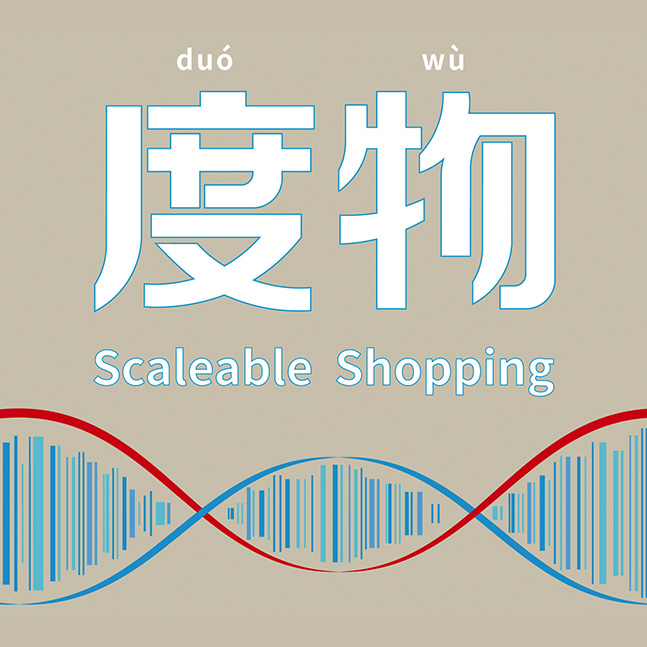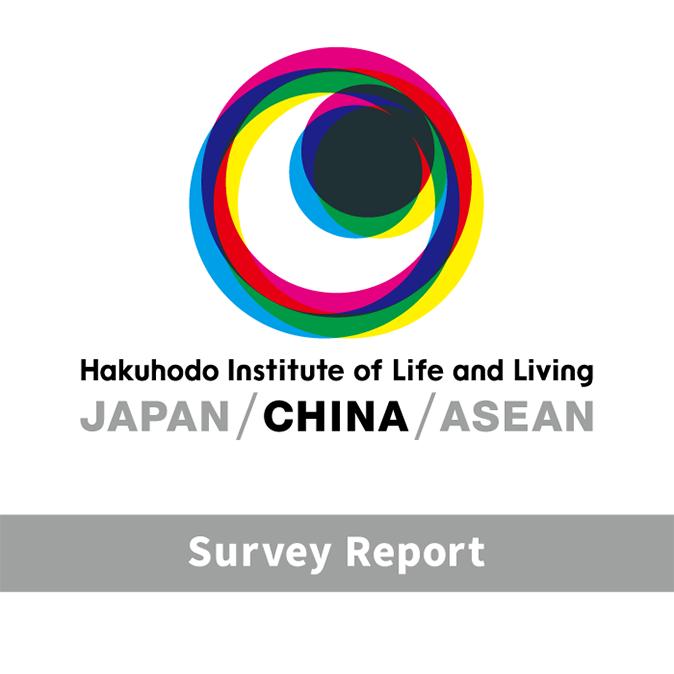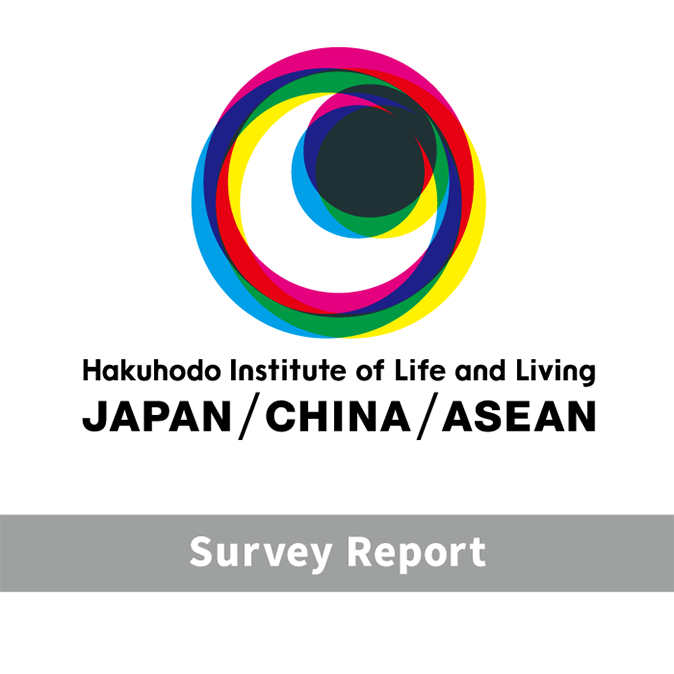- Events
- Research
- HILL
Duówù: Scaleable Shopping
Hakuhodo Institute of Life and Living Shanghai (HILL Shanghai) unveiled its eighth set of findings on “The Dynamics of Chinese People” in December 2020. The study is a joint research project conducted by HILL Shanghai and the Communication University of China’s School of Advertising that uncovers the desires and new lifestyles of sei-katsu-sha, Hakuhodo’s term for the holistic person, and makes recommendations. The theme this time was “New attitudes and behaviors emerging in China after COVID-19.” HILL Shanghai’s General Manager, Ming Zhong, summarizes the content of the presentation below.
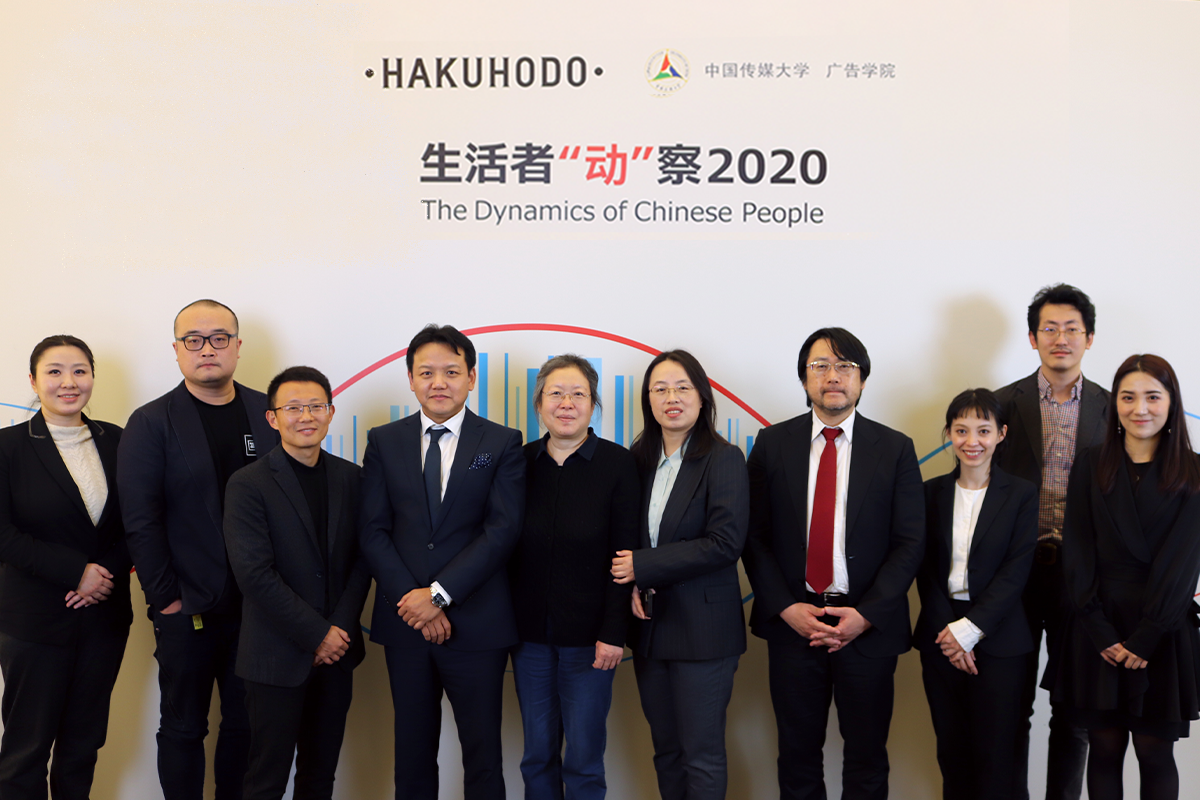 Hakuhodo Institute of Life and Living Shanghai researchers and guest speakers
Hakuhodo Institute of Life and Living Shanghai researchers and guest speakers
● The emergence of new shopping scales, Duówù
To thoroughly analyze the degree of change in sei-katsu-sha information and shopping behavior in China’s dramatically changing consumer market, in addition to our normal quantitative and qualitative survey methods, this time we conducted big data analysis based on the content of sei-katsu-sha’s social media posts and ecommerce (EC) purchasing histories to gain even deeper sei-katsu-sha insights.
As a result, we discovered that having spent their time in lockdown due to the pandemic reexamining their lives and values, Chinese sei-katsu-sha were beginning to buy things that they really needed, without paying attention to what others might think.
Chinese sei-katsu-sha were not shopping based on single scales like “it feels like a bargain” and “I can show it off to others.” Instead, they were using shopping scales that change flexibly depending on the situation, enjoying shopping while rethinking their lifestyles.
HILL Shanghai has named this sei-katsu-sha insight 度物 (Duówù: Scaleable Shopping). A new coinage, Duówù is comprised of one Chinese character meaning scale as a noun and to judge as a verb, and another taken from the Chinese word for shopping. Our analysis is that this is the expression of new values that have emerged as sei-katsu-sha reevaluate their everyday consumption behavior under the “new normal.”
● Online stores on EC sites and online lives the main sources of information for Duówù sei-katsu-sha
The first characteristic of Scaleable Shopping is change in information contact behavior. HILL Shanghai’s Shopping Life Survey asked respondents what information sources most affect them while shopping. Official stores on EC sites and online lives came out top, beating mass media and key opinion leaders (KOLs). Word of mouth from friends and acquaintances, user communities, etc. also ranked high.
We discovered that Duówù sei-katsu-sha’s sources of shopping information are shifting away from the mass media to social media, and also that the importance of real-time information from EC stores is rising rapidly. The spread of EC coupled with growing desire to enjoy a fuller life has seen the frequency and number of times that Duówù sei-katsu-sha engage in shopping behavior rise at a rate not seen anywhere else in the world. This trend appears to be continuing to accelerate following the pandemic.
Figure 1. Sources of information that impact them while shopping
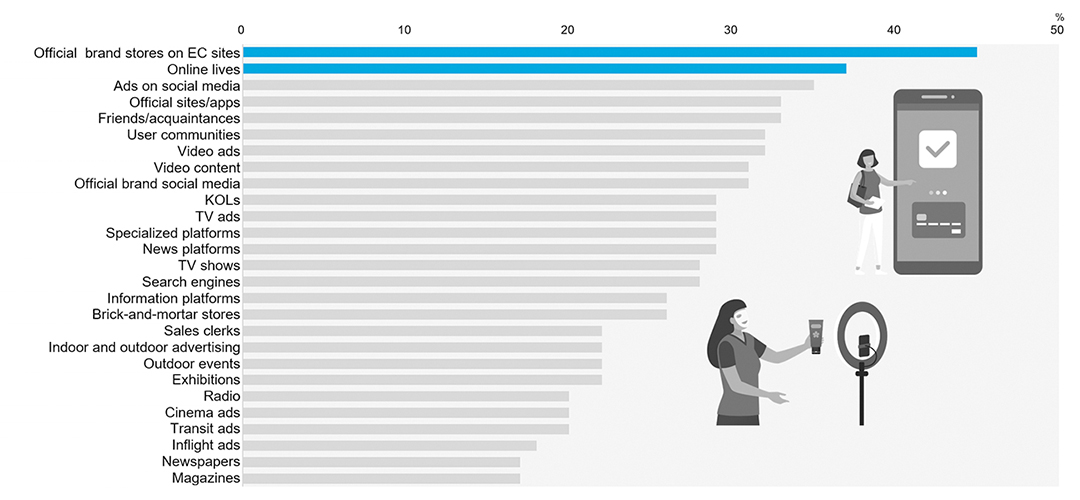 Source: Hakuhodo Institute of Life and Living Shanghai, Shopping Life Survey 2020, November 2020
Source: Hakuhodo Institute of Life and Living Shanghai, Shopping Life Survey 2020, November 2020
● Change in the timing of Duówù sei-katsu-sha’s purchases
The second characteristic of changes in shopping behavior is change in the timing of purchasing within the shopping process. Shopping online is already commonplace in China and, as indicated in Fig. 2, the timing of purchasing is becoming scattered. From during their commute to while at lunch, after dinner, and before bed, people are spending most of the breaks in their everyday lives shopping.
Also, when we asked at what moments of the process they feel the fun of shopping (Fig. 3), we found that there are various moments at each stage when people can enjoy the fun of shopping: from gathering information (particularly when finding a discount or bonus) prior to purchasing to interacting with a customer center or a store clerk while purchasing, to seeing that a product has shipped and unboxing it after purchasing. The fun is spread across the entire purchasing process.
Now that they can enjoy shopping anytime, anyplace as long as they have a smartphone, Chinese sei-katsu-sha are eagerly “researching” what shopping styles best suit them and what shopping experiences fulfill their needs. Duówù sei-katsu-sha’s desire for shopping is increasing daily in proportion to the heating up of this behavior, making these people an important factor pushing up the Chinese consumer market overall.
Figure 2. When they actually shop
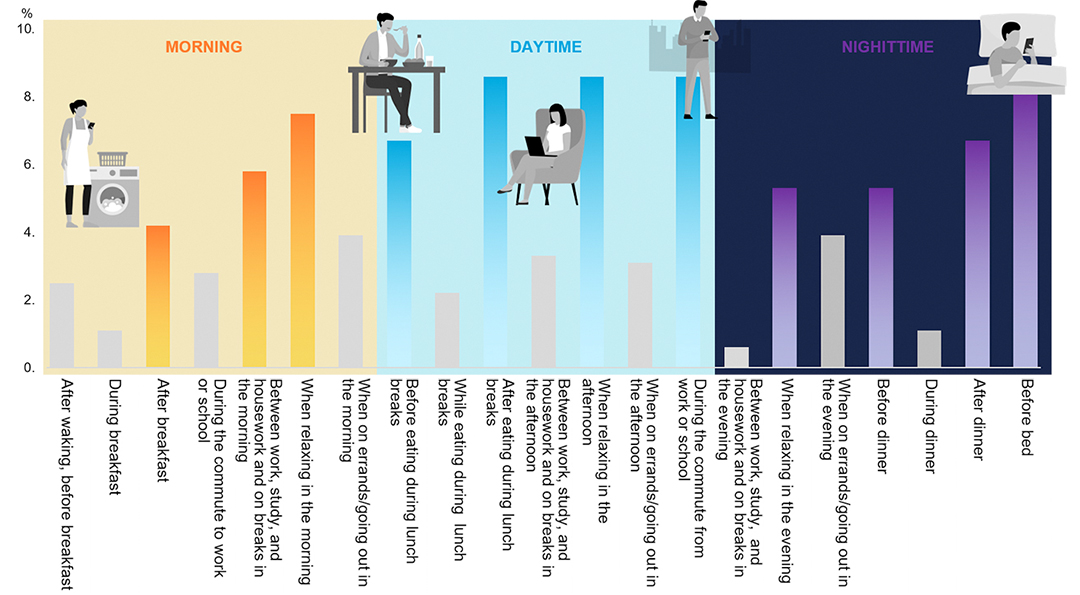 Source: Hakuhodo Institute of Life and Living Shanghai, Shopping Life Journal Survey, October 2020
Source: Hakuhodo Institute of Life and Living Shanghai, Shopping Life Journal Survey, October 2020
Figure 3. Moments they feel the fun of shopping
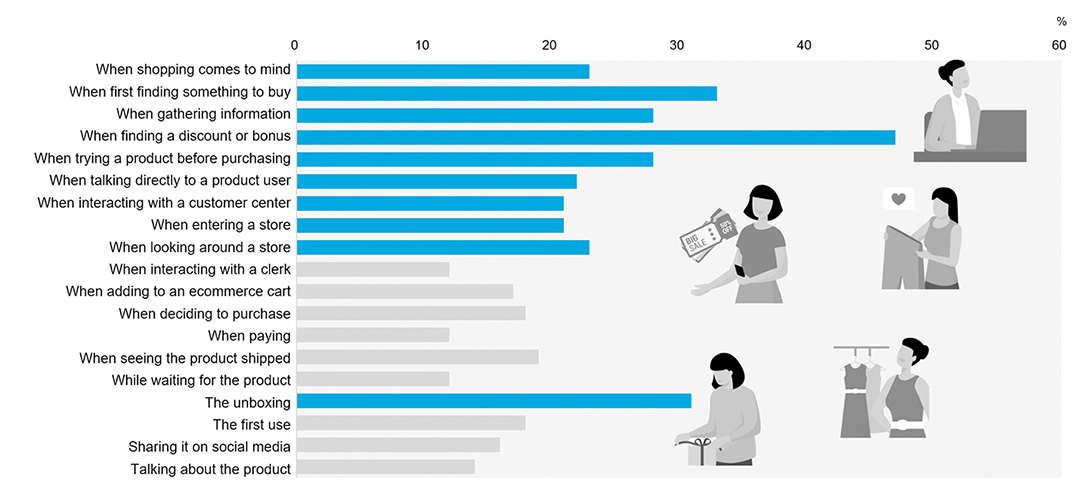 Source: Hakuhodo Institute of Life and Living Shanghai, Shopping Life Survey 2020, November 2020
Source: Hakuhodo Institute of Life and Living Shanghai, Shopping Life Survey 2020, November 2020
● Duówù sei-katsu-sha. Putting binge buying behind them, they now seek balance, searching for things that suit them
The third characteristic is changes in sei-katsu-sha’s shopping mindsets and preferences. This trend was also visible in the findings of HILL Shanghai’s fixed-point survey of shopping intentions, Consumption Barometer Survey (November 2020). While the desire to economize is growing, the desire to purchase higher quality products and services is also expanding. There is not even a hint that the pandemic cast a shadow on Chinese sei-katsu-sha’s desire to shop.
Expressing remorse for the binge-buying and wastefulness of the past, they now choose products and services that really meet their needs. A picture emerges of people enjoying their shopping lives while making sure their consumption is balanced.
Figure 4. Shopping mindsets
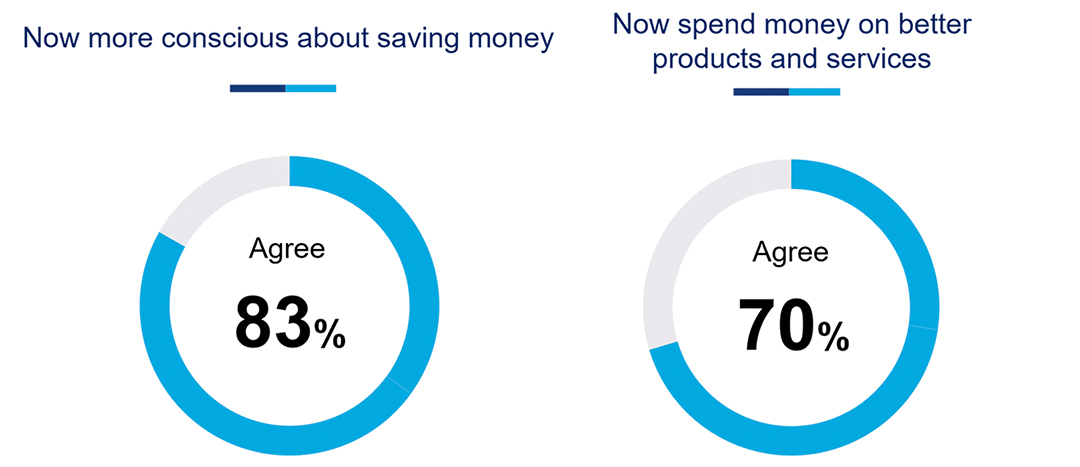 Source: Hakuhodo Life and Living Shanghai, Consumption Barometer Survey, November 2020
Source: Hakuhodo Life and Living Shanghai, Consumption Barometer Survey, November 2020We can be certain that such changes in sei-katsu-sha’s shopping behavior could potentially cause further change the development of information and shopping environment infrastructure, and corporate marketing activities.
● Recommendations to companies for understanding future Chinese sei-katsu-sha
In our presentation on Duówù sei-katsu-sha, we made several recommendations from the perspective of corporate marketing activities. One was to send information with a view to “on life shopping,” where sei-katsu-sha enjoy shopping anytime, anyplace.
As explained earlier, the evolution of shopping behavior in China has seen the times and places where sei-katsu-sha shop, whether online or offline, extend to anytime and anyplace and at every point in their daily lives. Considered in this light, just as shopping on the internet is called “online shopping,” we call shopping at every point in people’s lives “on life shopping.”
In addition, we also explained in detail, with concrete examples, the importance of branding activities centered around sales points that conjoin the two functions of selling and information transmission by integrating sales environments where online and offline channels were separate channels, and the importance of designing information that embraces sei-katsu-sha and satisfies their preferences, rather than sending over-exaggerated messages and images.
Full details will be available in a book summarizing the findings of this research that will be published in Chinese and Japanese on March 31.
About Hakuhodo Institute of Life and Living Shanghai and “The Dynamics of Chinese People”
HILL Shanghai was established in 2012 in Shanghai, China as the first institute of the Hakuhodo Group’s flagship think tank, Hakuhodo Institute of Life and Living, outside of Japan. Besides actualizing the Group’s corporate philosophy, Sei-katsu-sha Insight, it supports companies’ marketing activities in China, while developing local insights and making proposals on future new ways of living in China.
“The Dynamics of the Chinese People” is a joint presentation of research findings by Hakuhodo Institute of Life and Living Shanghai and the School of Advertising at the Communication University of China. Its publications are released in Chinese and Japanese. Please contact HILL Shanghai with any queries.
Hakuhodo Institute of Life and Living Shanghai: hills@hakuhodo-shzy.cn
Countries surveyed:
China: 3,000 samples (total) from Tier 1–4 cities
Japan: 1,000 samples (total) from the Kanto, Kansai and Tokai regions
USA: 1,000 samples (total) from New York, Los Angeles and Chicago
A total sample size of 5,000 for the three countries
Respondent criteria: Males and females aged 20–59 who own a smartphone
* In China there was an income criterion of monthly household income of 6,000–29,999 CNY (8,000–49,999 CNY for Tier 1 cities)
* There was no income criterion for Japan or USA
Survey method: Internet survey
Survey period: November 2020
Conducted by: Macromill, Inc.
Survey method: Internet survey
Respondents: 1,600 males and females aged 20–69 that own smartphones in Tier 1 and New Tier 1 cities in China
Monthly household income of 7,000–29,999 CNY (4,000–9,999 CNY for respondents aged 60–69)
Conducted by: wenjuan.com














